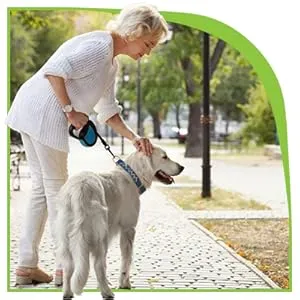As our beloved canine companions age, just like humans, they often experience changes in their bodies. One of the most common and impactful changes is the onset of joint issues, which can significantly affect their mobility, comfort, and overall quality of life. Understanding and proactively managing Joint Health For Senior Dogs is crucial for ensuring their golden years are as happy and active as possible. Early recognition of signs and a proactive approach can make a significant difference in their well-being.
Joint problems in older dogs are not merely a natural part of aging to be ignored; they are often manageable conditions that require attention. Keeping your senior dog’s joints healthy involves a multifaceted approach, including proper nutrition, appropriate exercise, weight management, and, in many cases, veterinarian-recommended supplements. This guide will delve into what you need to know to support your aging dog’s joint health, ensuring they continue to enjoy every precious moment with you. Many owners also consider providing the best supplements for aging dogs to support their pets’ mobility and comfort.
Recognizing the Signs of Joint Issues in Senior Dogs
Observing your dog’s behavior for subtle changes is key to identifying potential joint problems early. These signs can be easily mistaken for general slowing down due to age, but they often indicate discomfort or pain. Pay close attention to these indicators:
Changes in Mobility and Movement
One of the most noticeable signs is a reluctance or struggle with movements that were once easy. If you observe your senior dog having difficulty with routine physical tasks, it’s a strong signal that their joints might be bothering them.
- Difficulty getting up to snuggle: Does your dog struggle to rise after resting or sleeping? This could manifest as a slow, stiff rise, or needing multiple attempts to stand. This difficulty often indicates discomfort in their hips or knees.
- Reluctance to climb stairs: Hesitation or complete avoidance of stairs, or even a noticeable struggle going up or down, points to joint pain, particularly in the hips and spine.
- Hesitation to jump: If your dog used to easily jump onto the couch, bed, or into the car but now hesitates or requires assistance, it suggests that jumping is painful or uncomfortable.
- Shorter walks and reduced play: Have those long, energetic walks become shorter and less enthusiastic? A decrease in their desire to walk, run, or play, or signs of fatigue during these activities, can be directly linked to joint discomfort. Dogs with joint issues may simply not want to move as much as they used to, affecting their agility and overall movement.
 Smiling Veterinarian examining happy dog
Smiling Veterinarian examining happy dog
Behavioral and Postural Changes
Beyond obvious movement issues, subtle behavioral and postural shifts can also indicate joint pain. These changes reflect your dog’s attempt to cope with discomfort.
- Limping or favoring a limb: Any visible limping, lameness, or favoring of one leg over another while walking or standing is a clear sign of pain or injury in that limb or its associated joints.
- Stiffness, especially after rest: Stiffness is often most apparent after periods of inactivity, such as first thing in the morning or after a long nap. This stiffness tends to improve slightly with movement but can reappear.
- Licking or chewing at joints: Dogs may excessively lick, chew, or guard a particular joint area in an attempt to alleviate pain or discomfort. This can also lead to skin irritation or hair loss in the affected area.
- Changes in temperament: Pain can make even the sweetest dog irritable or withdrawn. If your dog becomes less tolerant of being touched, growls when approached, or isolates themselves more often, joint pain could be a contributing factor.
- Difficulty finding a comfortable resting position: Dogs with joint pain may frequently shift positions, struggle to lie down, or appear restless while trying to get comfortable. This is a tell-tale sign of persistent discomfort.
 Older woman is pausing a walk to pet her larger, older dog
Older woman is pausing a walk to pet her larger, older dog
Why Senior Dogs are Prone to Joint Issues
Understanding the underlying causes can help you better manage your senior dog’s joint health. Multiple factors contribute to joint degradation over time.
- Age-related wear and tear: Over years of activity, the cartilage that cushions joints naturally wears down, leading to bone-on-bone friction, pain, and inflammation. This is a primary driver of osteoarthritis, a common condition in senior dogs.
- Genetics and breed predisposition: Some breeds are genetically predisposed to certain joint conditions, such as hip dysplasia or elbow dysplasia. While these conditions can appear at any age, they often worsen with age. Breeds like German Shepherds, Labradors, Golden Retrievers, and Rottweilers are particularly susceptible. Dog food for hip dysplasia is often formulated to support these specific needs.
- Weight and obesity: Excess weight puts significant strain on a dog’s joints, accelerating cartilage degradation and increasing inflammation. Maintaining a healthy weight is one of the most impactful things you can do for your senior dog’s joint health.
- Past injuries or trauma: Previous injuries, even seemingly minor ones, can predispose a joint to arthritis later in life. Ligament tears (like CCL ruptures) or fractures can alter joint mechanics, leading to premature wear.
- Nutritional deficiencies: Inadequate nutrition, especially during growth or throughout life, can compromise joint health. A balanced diet rich in essential nutrients supports cartilage and bone strength.
The Role of Cartilage and Joint Supplements
Healthy cartilage is vital for smooth, pain-free joint movement. It acts as a shock absorber, protecting the bones from friction. When cartilage breaks down, joint function is impaired.
Joint health supplements often contain ingredients like glucosamine, chondroitin, and MSM, which are believed to support cartilage structure and function. For instance, some supplements work by inhibiting the enzymes that break down cartilage, thereby helping to maintain its integrity and potentially making everyday activities easier for your dog. While generally safe, it’s good to be aware of potential msm for dogs side effects and discuss them with your vet. These ingredients aim to:
- Support cartilage repair and synthesis: Glucosamine is a building block of cartilage, while chondroitin helps maintain cartilage elasticity and inhibits destructive enzymes.
- Reduce inflammation: Many joint supplements include anti-inflammatory ingredients like omega-3 fatty acids, turmeric, or Boswellia serrata, which can alleviate pain and swelling in the joints.
- Provide antioxidant support: Antioxidants help neutralize free radicals that can damage joint tissues.
 Dasuquin product on a wooden surface
Dasuquin product on a wooden surface
Comprehensive Management Strategies for Senior Dog Joint Health
A holistic approach is essential to effectively manage and support your senior dog’s joint health. Combining veterinary care with home management can provide the best outcomes.
1. Veterinary Consultation is Paramount
When you notice any changes in your dog’s health, especially concerning mobility, the very first step should always be to consult your veterinarian. Your vet can accurately diagnose the issue, rule out other serious conditions, and recommend the most appropriate course of action tailored to your dog’s specific needs. They may suggest:
- Diagnostic imaging: X-rays can help assess the extent of joint damage or conditions like arthritis or dysplasia.
- Medications: Anti-inflammatory drugs (NSAIDs), pain relievers, or other prescription medications can manage pain and inflammation.
- Therapies: Physical therapy, hydrotherapy, acupuncture, or laser therapy can be highly beneficial for improving mobility and reducing pain.
2. Diet and Weight Management
Maintaining an ideal body weight is arguably the single most important factor in managing joint health. Even a few extra pounds can place significant stress on already compromised joints.
- Balanced nutrition: Feed a high-quality senior dog food that is formulated for joint support, often containing natural sources of glucosamine and chondroitin, or omega-3 fatty acids. If your dog has specific conditions like hip dysplasia, your vet might recommend specialized homemade dog food for hip dysplasia recipes.
- Portion control: Strictly adhere to recommended feeding guidelines and monitor your dog’s weight. Adjust food intake as needed to prevent weight gain.
3. Appropriate Exercise
While intense exercise might be detrimental, regular, low-impact activity is crucial for maintaining muscle strength, flexibility, and healthy joint fluid.
- Short, frequent walks: Instead of one long walk, opt for several shorter, gentle walks throughout the day.
- Swimming: This is an excellent low-impact exercise that allows your dog to move their joints without bearing full weight.
- Gentle play: Supervised, calm play sessions can keep them engaged without overexertion. Avoid activities that involve sharp turns, jumping, or sudden stops.
4. Environmental Modifications
Making simple adjustments around your home can greatly improve your senior dog’s comfort and safety.
- Ramps or steps: Provide ramps or pet stairs for accessing furniture or vehicles, reducing the need for jumping.
- Non-slip surfaces: Place rugs or mats on slippery floors (hardwood, tile) to provide better traction and prevent falls.
- Orthopedic beds: A supportive, orthopedic bed can reduce pressure on joints and provide more comfortable rest.
- Easy access to essentials: Ensure food, water, and potty areas are easily accessible without requiring your dog to climb or navigate difficult obstacles.
5. Joint Health Supplements
As mentioned, supplements can play a supportive role. Always discuss supplement choices with your veterinarian to ensure they are appropriate for your dog’s specific health needs and won’t interact negatively with any other medications. Brands recommended by veterinarians are generally a good starting point due to their scientific research and quality control.
Conclusion
Caring for a senior dog with joint issues requires diligence, patience, and a proactive partnership with your veterinarian. By recognizing the signs of discomfort, understanding the causes, and implementing a comprehensive management plan—including proper diet, appropriate exercise, environmental modifications, and veterinarian-approved supplements—you can significantly improve your senior dog’s joint health and enhance their quality of life. The goal is not just to extend their lifespan, but to ensure those precious extra years are filled with comfort, mobility, and joy. Remember, even small changes can make a big difference in keeping your senior dog happy and moving. For other aspects of their well-being, consider exploring resources on healthy chew bones for dogs to support dental health while providing mental stimulation.
